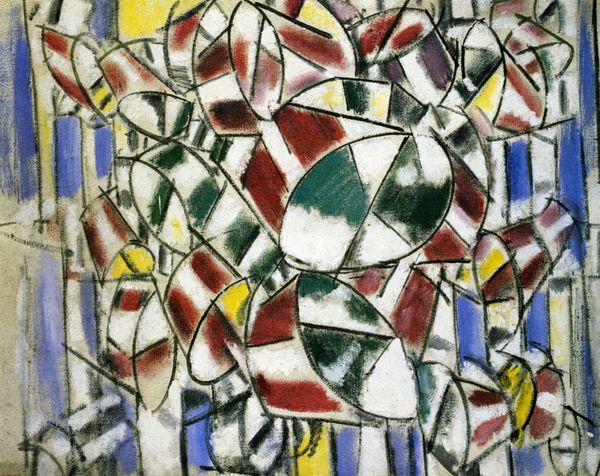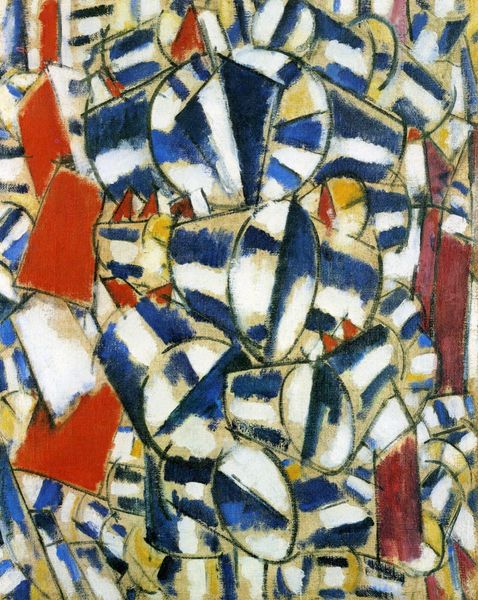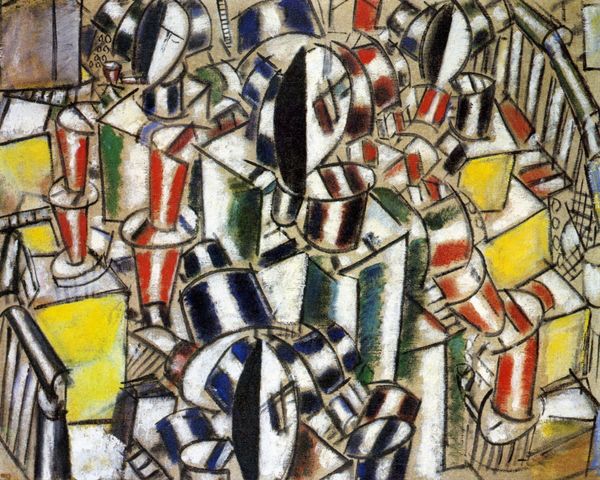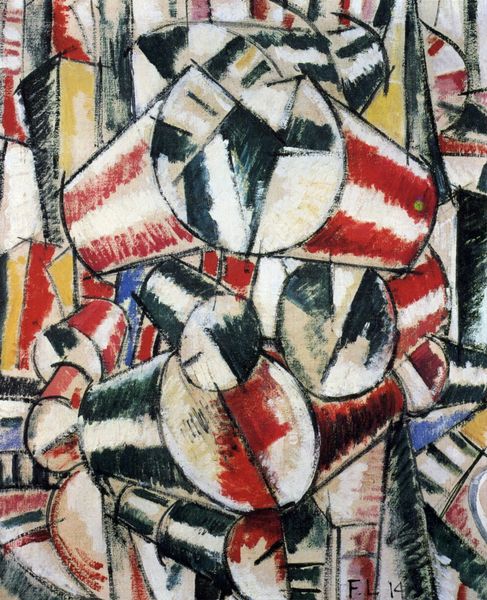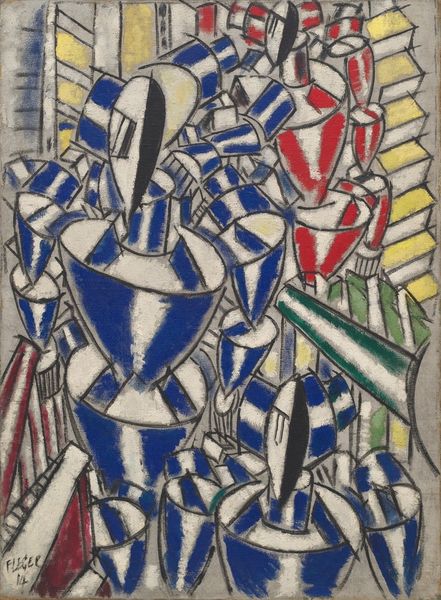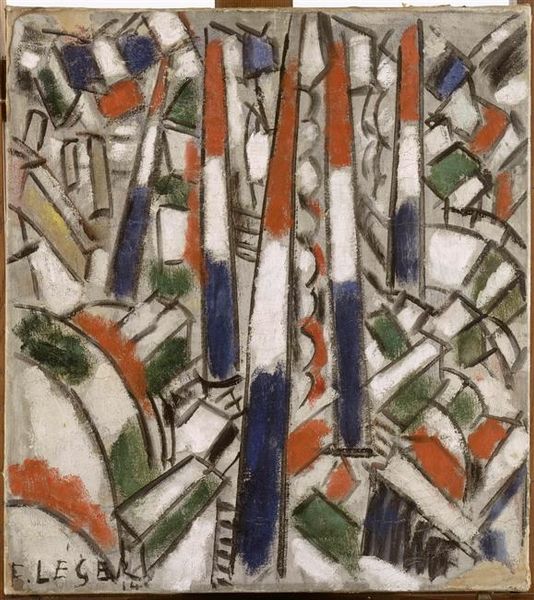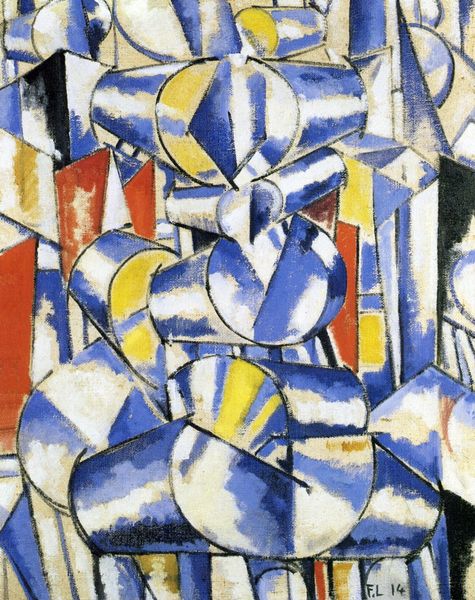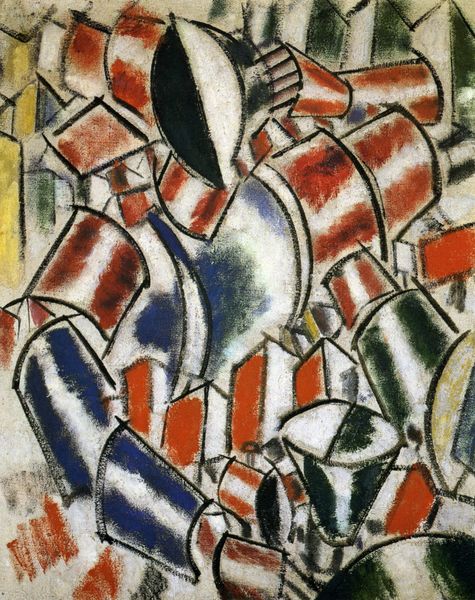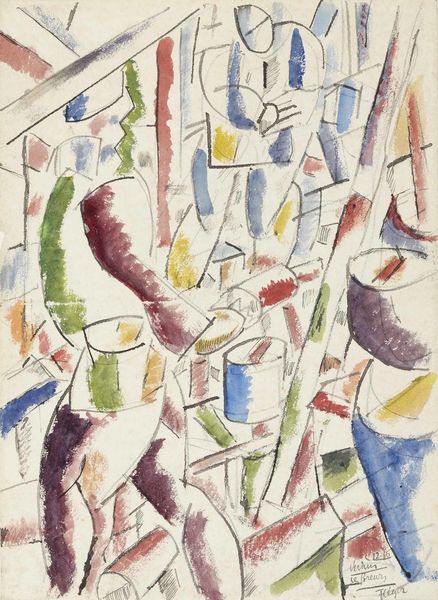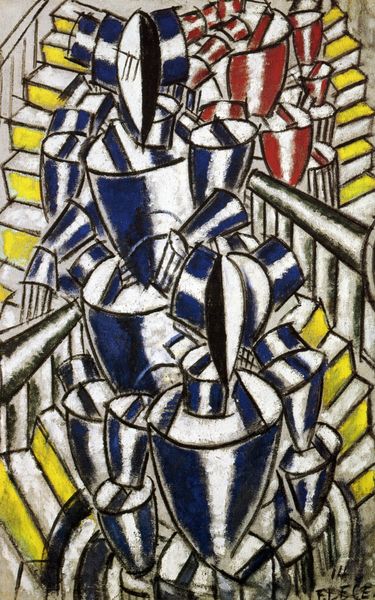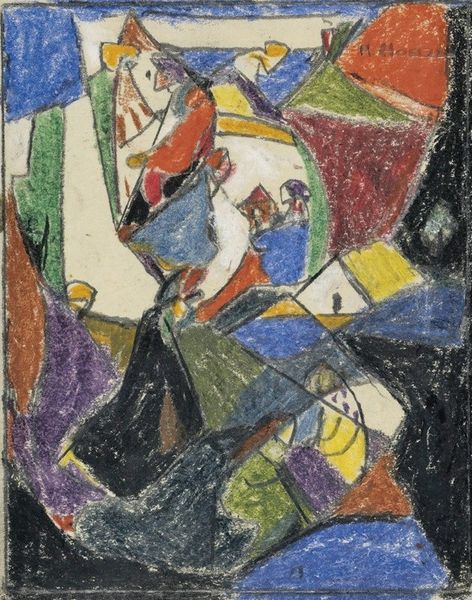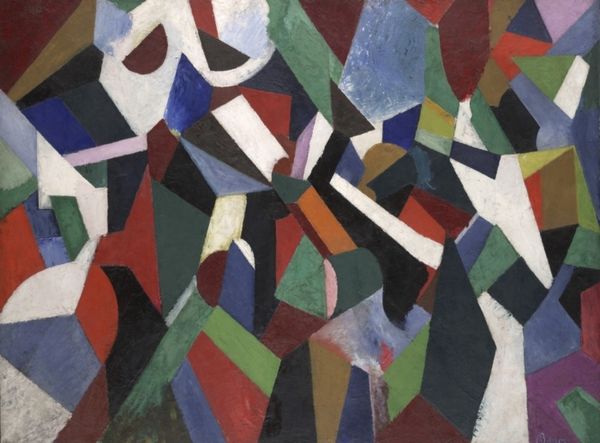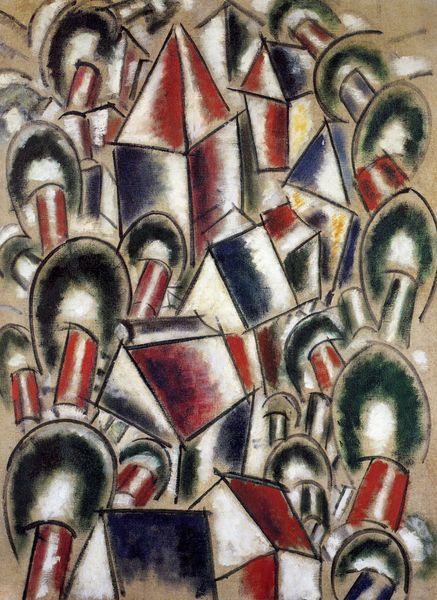
painting, oil-paint
#
cubism
#
painting
#
oil-paint
#
abstract
#
geometric pattern
#
geometric
#
abstraction
Copyright: Modern Artists: Artvee
Editor: Right, let’s talk about Fernand Léger's "Contrast of Forms" from 1913, an oil painting that explodes with geometric shapes and vibrant color. I am immediately struck by the painting’s sheer energy, like a visual symphony of fragmented forms. How do you even begin to unpack something so… abstract? Curator: Well, aren't we all just fragmented forms looking for harmony? Léger was fascinated by the industrial age, the raw energy of machines and the city. He saw beauty in the mundane, the gears and pistons, and wanted to translate that onto the canvas. What initially seems chaotic is actually carefully orchestrated; Léger used contrast – of colors, shapes, lines – to create a dynamic tension. Notice how the rounded forms push against the hard edges. Editor: It's definitely not static, you're right. The interplay between curved and straight edges is pretty striking now that you point it out, but it almost feels…cold. Do you think that the coldness comes from him not painting traditional themes like landscapes or portraits? Curator: Perhaps “cool” is a better descriptor. Léger aimed to capture the feeling of modern life – the excitement, the speed, but also the alienation. He wanted to create a new kind of beauty, divorced from sentimentality. I think the absence of the figure forces us to confront the pure, abstract elements of art: color, form, and composition, don’t you? It makes the viewing experience active! Editor: I think you’ve really changed my view, it is interesting to engage with just pure shape and color! I definitely have something to think about! Curator: Precisely, to question what constitutes beauty! These paintings offer so much once you have a starting point, I learned something new too!
Comments
No comments
Be the first to comment and join the conversation on the ultimate creative platform.
